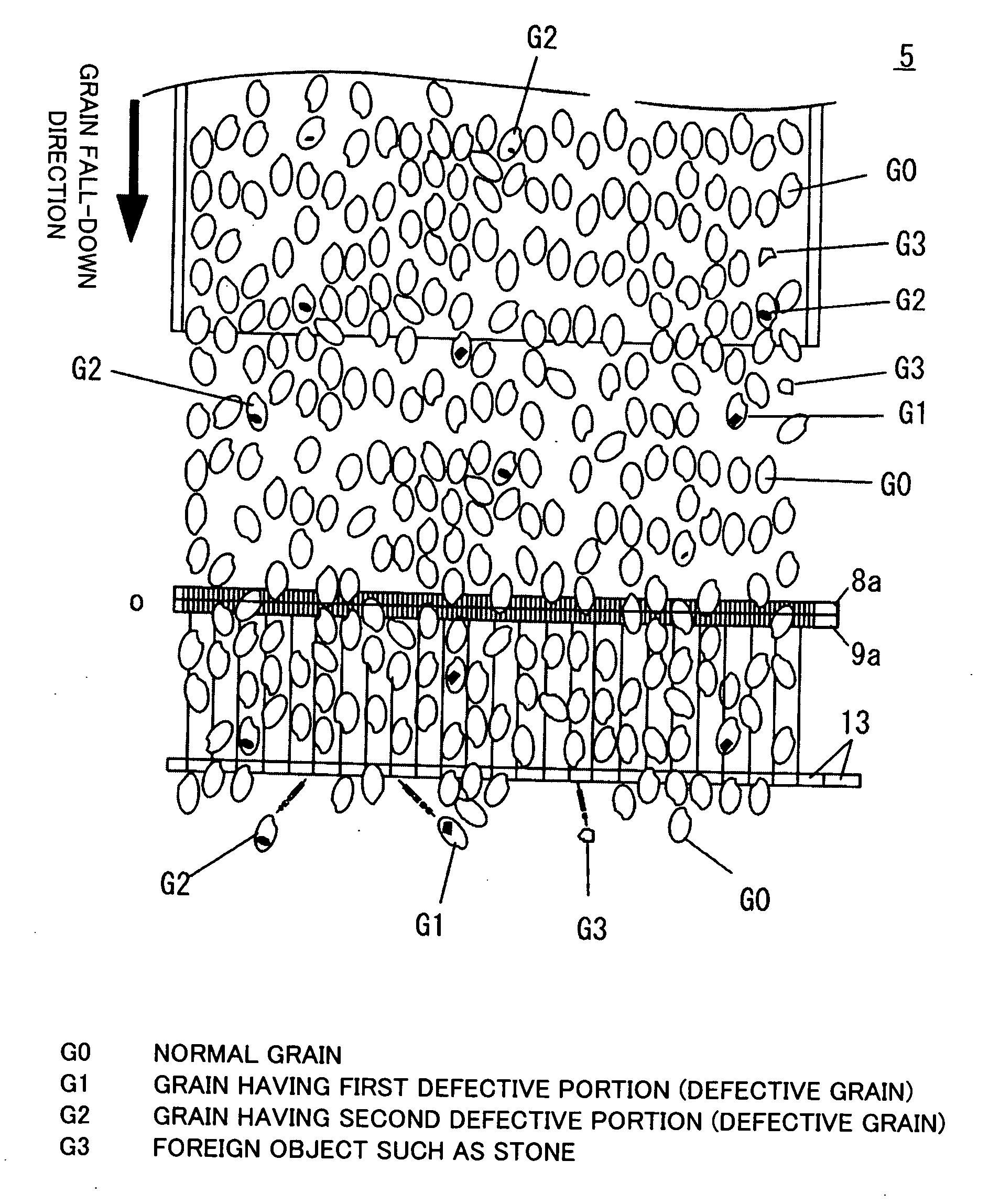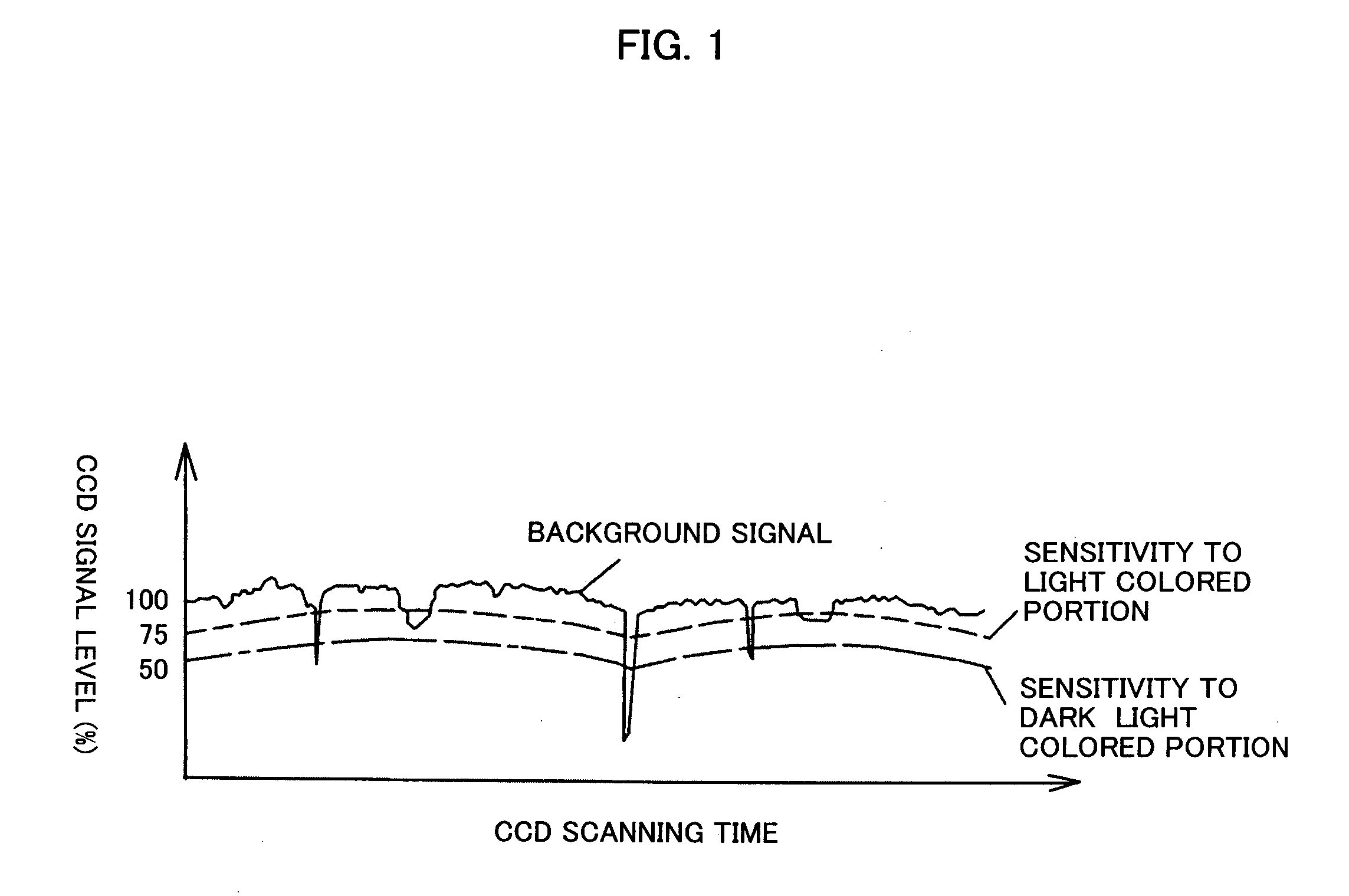Optical grain sorter
a sorter and optical technology, applied in the field of optical grain sorters, can solve the problems of operator failure to notice defective grains, inability to discriminate between normal grains and defective grains displayed on the monitor, and inconvenient setting of sorting level
- Summary
- Abstract
- Description
- Claims
- Application Information
AI Technical Summary
Benefits of technology
Problems solved by technology
Method used
Image
Examples
Embodiment Construction
[0042]FIG. 2 schematically shows essential internal structural portions of an optical grain sorter 1 which is an embodiment of the present invention. The optical grain sorter 1 has, at an upper position therein, a grain supply portion 4 including a tank 2 and a vibrating feeder 3. Grains supplied from the grain supply portion 4 (polished grains in the present embodiment) flow continuously downward onto a slanting shoot 5 by gravity. On the slanting shoot 5 having a predetermined shape, grains can flow downward while spreading laterally widely. The grains are let fall from the lower end of the slanting shoot into the air by taking a multiplicity of columnar fall-down paths parallel to each other. In the present embodiment, the slanting shoot 5 has flat shooting surface, as shown in FIG. 3A. However, the shooting surface may have a multiplicity of flow-down grooves 6 each having a width close to the width W of grains, as shown in FIG. 3B. It is preferable to provide such grooves becau...
PUM
 Login to View More
Login to View More Abstract
Description
Claims
Application Information
 Login to View More
Login to View More - R&D
- Intellectual Property
- Life Sciences
- Materials
- Tech Scout
- Unparalleled Data Quality
- Higher Quality Content
- 60% Fewer Hallucinations
Browse by: Latest US Patents, China's latest patents, Technical Efficacy Thesaurus, Application Domain, Technology Topic, Popular Technical Reports.
© 2025 PatSnap. All rights reserved.Legal|Privacy policy|Modern Slavery Act Transparency Statement|Sitemap|About US| Contact US: help@patsnap.com



